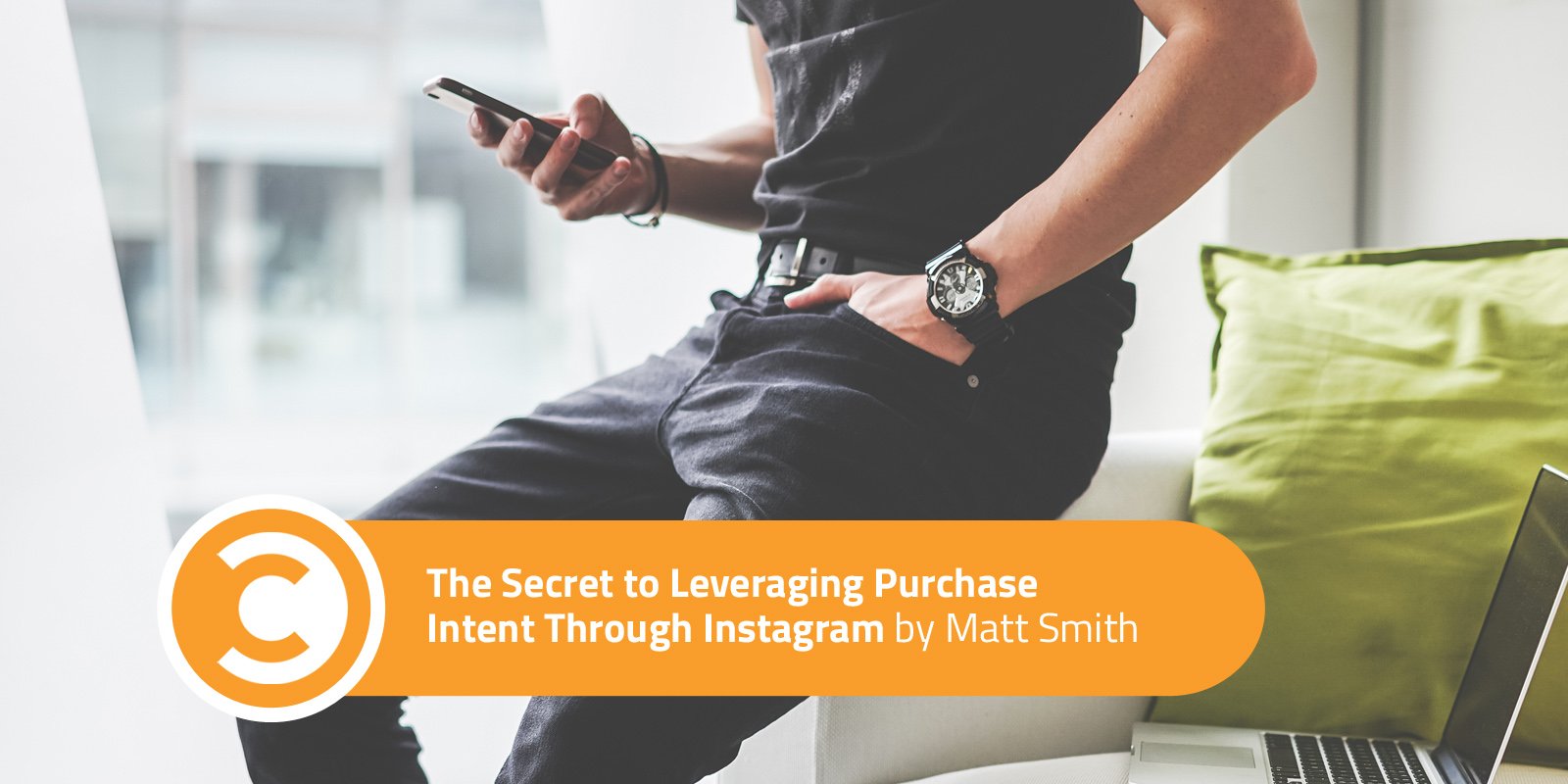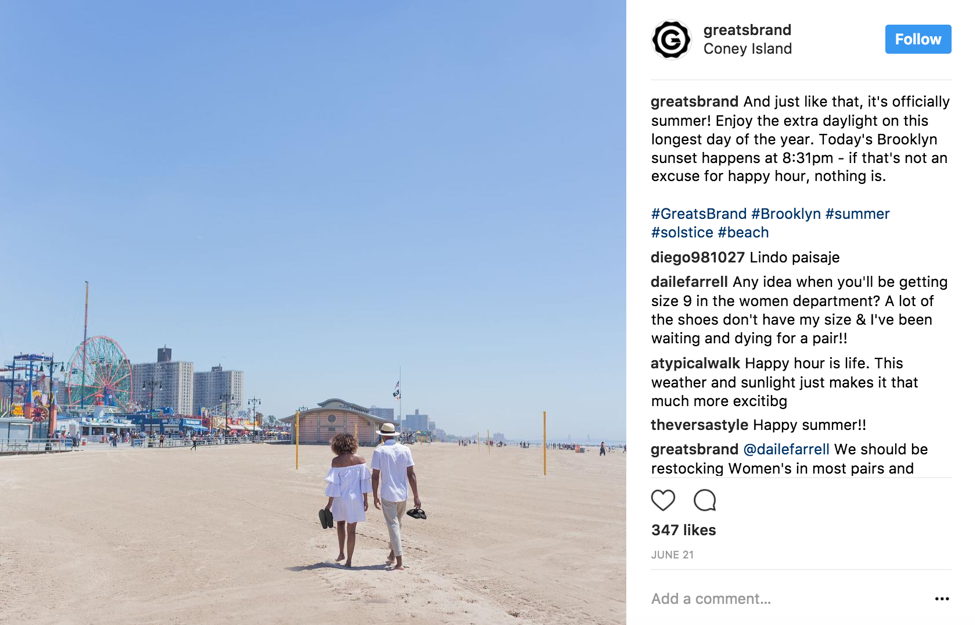
Instagram is the king of engagement. People flock to the platform to see what friends are up to, get the latest news and celebrity updates, and window shop their favorite brands. The challenge for companies using Instagram as a marketing tool is switching a user’s mindset from passive browsing to active shopping, and getting them to click through to products or content outside of the social platform.
Unwanted interruptions won’t inspire users to take action. However, with the right approach, you can measure purchase intent and increase conversion rates through Instagram.
The challenge with Instagram is switching a user’s mindset from passive browsing to active shopping. Click To TweetCreate Desire, Then Follow the Data
While Instagram as a social platform is not new, its usefulness as an e-commerce channel remains cloudy for many marketers. This is especially true for non-millennials who are less familiar with the platform.
With the release of a new API in July, Instagram now offers all business accounts the ability to track organic content performance on third-party tools. A new comment moderation feature also gives businesses added control over how users interact with their feed. Brands are gaining a clearer idea of how their followers behave within the app. However, getting people to click through to a mobile-optimized website is still the best way to glean insights into their purchase intent.
If people do click on a product link from Instagram (say a watch, or a piece of jewelry), this is usually a sign of high intent to purchase. Once someone visits your website from an Instagram link, you can start to identify what they’re most interested in.
Use Instagram to Promote Purchases
When using Instagram to drive conversions, you want to know how many people land on your website (and ultimately make a purchase) from the platform. Instagram has implemented two new features in recent months that help promote and measure conversions.
If you have a business account with more than 10,000 followers, you can use the “swipe up” function on Instagram Stories. This lets you add a link to a specific product page on your website.

With Shoppable Instagrams, companies can tag products in their regular Instagram posts. This feature originally had a limited roll-out, but the integration is now available to thousands of Shopify’s merchants and any U.S. company using Bigcommerce, an e-commerce platform that serves over 50,000 businesses.
Tagging products helps identify which items earn the most traffic and allows you to build engagement around them. To get users out of the browsing mindset and into a purchasing one, use a pixel to track them. Retarget them on social channels or search engines with ads for the products that caught their attention. Then, use A/B testing with different images and CTAs to see which method drives the most conversions.
As you build your process, reverse-engineer your findings to see where purchasing intent tends to originate. You can use in-app insights to see what types of products or posts your followers interact with most. Use this data to inform the links you include in Instagram stories and ads. See how many purchases came from a specific product link within an Instagram ad or story, and use that knowledge to further refine your marketing approach.
Our team at Later created a tool to help companies determine which products users are most interested in and which posts see higher click-through and conversion rates.
Keep Consumers Engaged on Instagram
Once users engage with your Instagram, you can track and identify user behavior to drive them to your website landing page. But you’ll also want to keep users engaged with your Instagram account to help further your brand’s reach. The best way to do this is to continue providing valuable content. This two-step process can help make that happen.
1. Develop a Comprehensive Content Strategy
Your audience wants to relate to your brand through your Instagram posts. Don’t just flood your Instagram with purchase links—tell a story they want to hear. Build a content strategy that fosters a relationship with your audience while educating them on your business and products.
To ensure your Instagram content is consistent and relevant to your audience, use a content calendar and visual planner to plan out what to post and when. Do a bit of research to find the optimal time of day to post. We surveyed social media managers and found that the best times to post to Instagram are generally lunchtime and between 7 and 9 p.m., but different times may work better for you. Instagram can also show you the most popular times of day for your followers through its Insights tool.
Once you’ve nailed down optimal times to post, plan out the photos and captions you’ll post. Keep your audience engaged with your posts by choosing themes for specific months or seasons, running contests or giveaways, and interacting with fans who post about your brand.
Greats, a Brooklyn-based shoe company, has perfected its Instagram content strategy. The company’s Instagram blends Italian pride (the shoes are Italian-made), lifestyle content, and product news to connect with its millennial following.

2. Embrace User-Generated Content
Instagram remains a social platform—to succeed on it, your brand has to be social. Interacting with user-generated content is one of the most authentic strategies at your disposal to build engagement around product pages.
Vanity Planet recently ran an A/B test that helped the company increase visits to its checkout page by 24 percent simply by linking to users’ real-life Instagram photos on product pages. With 76 percent of consumers perceiving user-shared content as more honest proof of credibility and trustworthiness than brand advertising, companies can no longer afford to draw an absolute line between brand and user-generated content.
To embrace user-generated content, encourage your followers to tag you in the photos they take of your products or services. Repost those photos with shoutouts to the users who originally posted them. Not only will people featured on your Instagram feel great that a brand used their photos and mentioned them, but your followers will see that real-life people are interacting with your brand and loving it.
Instagram might seem impenetrable on the surface, but brands that learn how to navigate it reap the rewards of improved engagement, conversions, and brand perception. With the right approach to both content and data, you can transform your Instagram presence into a more profitable arm of your social media strategy.
Tracking sales and ROI through social media has become increasingly important. Are you strategically engaging and retargeting visitors from your Instagram page?

